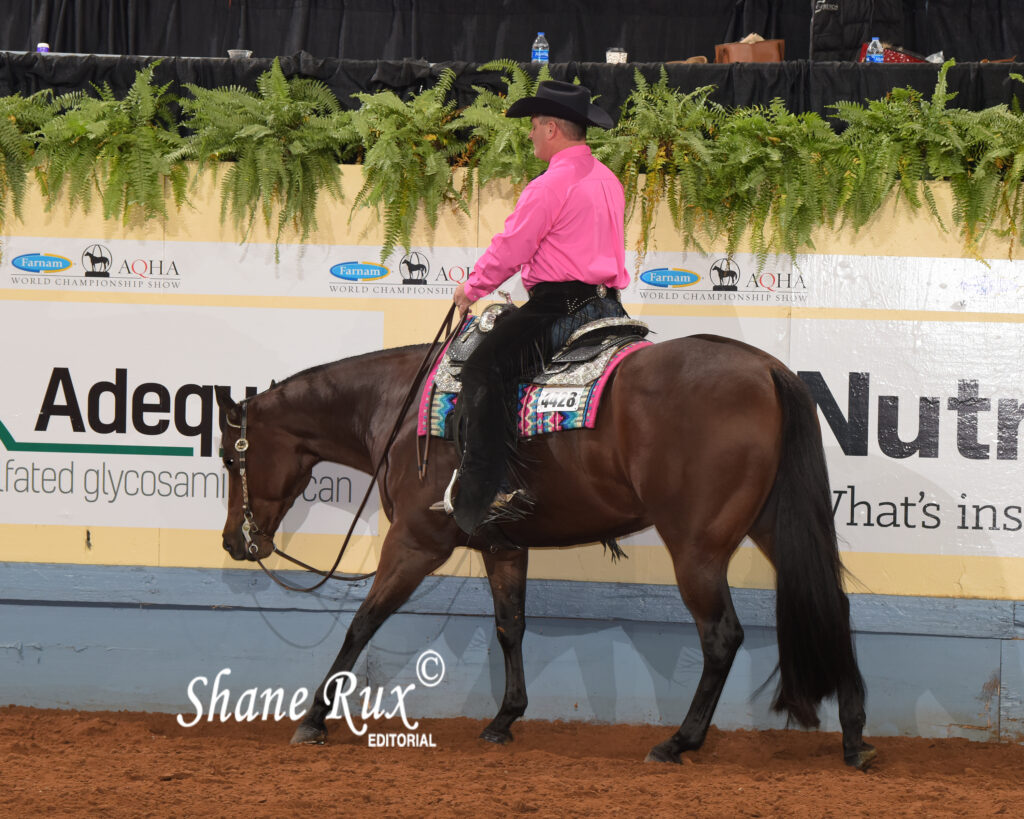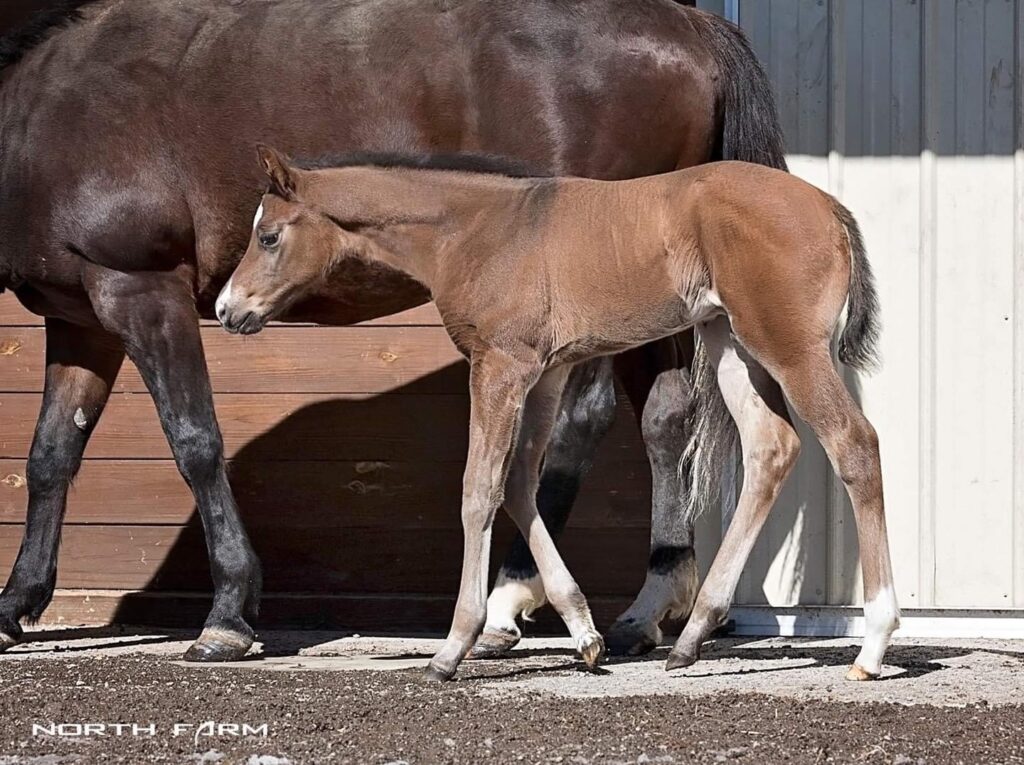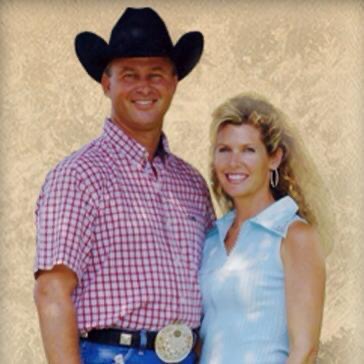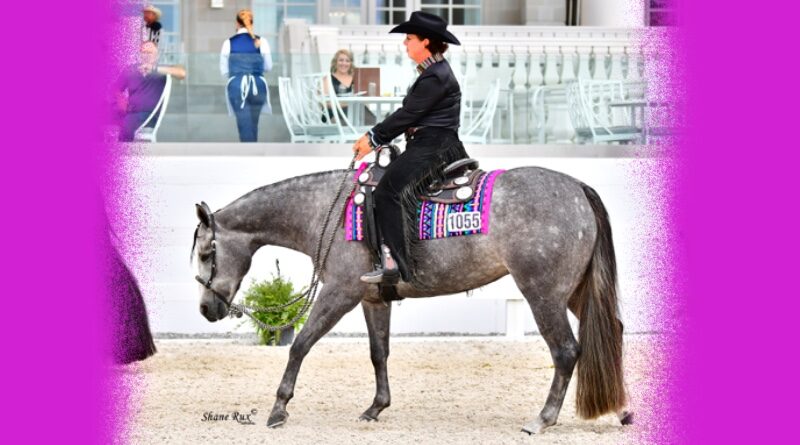In Celebration Of The Western Pleasure Horse
Great “Strides” are Being Made
By Robyn Duplisea
For the past week I have seen many comments floating around social media in a flurry of controversy about the western pleasure horse. The opinions vary greatly from source to source and the comments have left me defending the industry I love, every time I open my computer.
That horse they are talking about as “abused” and “crippled” is in fact someone’s treasured partner. His “Stepford wife” temperament is actually what I would call good minded. He is the horse I trust my non-riding husband on, and the one we all trust our children to learn from.
He is the horse I watched in awe from the moment he stood and nursed and then loped across the pasture with perfect cadence and deep hocks.
He is the ”baby” I place with the best trainers, who I am confident will develop his natural ability and not “break him.”
He is my dream come true. His personality and soul are celebrated, (including his goofiness outside the pen) and he is my comfort during the toughest days. His mane has soaked up many tears when life has been rough, and the sound of him munching his hay is better than any therapy, in my opinion.

The lope that some feel is unnatural and mechanical is the result of breeding the best of the industry for decades. His head and neck are level as he rounds his back to use his hocks and maintain his impulsion. It is natural to this horse. He was born this way.
Like the cat-like cutting horse that gets low to the ground and cuts with all his heart. You have probably seen them on videos. All the spectators celebrate when they keep cutting even though the rider is no longer there.
Like the reining horse you applaud for his 30-foot slides and rollbacks, the Grand Prix dressage horse capable of a perfect piaffe and canter pirouette, the show jumper that clears 1.6 meters and the racehorse who captures the heart of the nation by winning the Triple Crown.
None of these actions are “natural” to a wild horse, but then again, these animals are not wild horses.
These elite athletes share a history of breeding practices and training. Each excels in his or her own “arena” and each should be appreciated for what they are. My horse may lope differently than yours, but that does not mean he is lame or abused. While you may feel it is kind to let your horse gallop free with his head in the air, my horse would have to be terrified to move that way, and to force him to do so would be cruel.

Debbi Trubee of North Farm has vast experience with the western pleasure breeding programs that have created the modern pleasure horse.
“It’s a very complicated subject,” says Trubee. “We strive to breed horses that have natural self-carriage and superior conformation and movement. It is easier for the young stock to hang their necks low as they have been bred to do that, and it’s easier for the young stock to jog slow and lope with lift and a big hock because they have been bred to do that.”
I have been in this industry long enough to be the first to say it is not perfect. Yes, there are some people who have cut corners and have forced an animal to do something it was not born naturally to do. Yes, we have had trends and fads that even the most devout pleasure lover shakes their head at. I think we have to remember where we have come from in order to move forward, and not tolerate the mistakes of the past.
Heads no longer dangle on the ground, “peanut rolling” like they did in the late 80’s and early 90’s. The horses are fat and shiny and are not starved or drugged into submission (I remember those days too). The ones that win do not look intimidated and overpowered; they show with expression. And the great ones keep winning even as they age. Look at A Certain Vino.
The modern western pleasure horse is a different animal. Our judges are looking for a natural horse; one that has self-carriage, one that flows and uses himself with balance and cadence. They place the horse that is the most consistent with great movement. The head bobbing, 4 beaters do not place. We have seen vast improvements over the years. Many of our pleasure horses go on to have all around careers where they compete in horsemanship, trail and western riding. The training and natural movement of the western pleasure horse helps to create an athlete capable of the challenging maneuvers of these classes.
I watched a large pleasure class at this year’s Congress and I was impressed. I saw horses moving with flow and momentum. I was happy to see that hips were not over canted and these horses were moving straight for the most part. My view is that ours is an industry that is ever evolving for the betterment of the horse. Our judges ask for extensions of the jog and lope and the riders comply and show the horses at the more forward pace.
Judging is key to continuing the progress we have made and changing the perception of the pleasure horse. Debbi Trubee comments, “The problem comes into play when the trainers try to emulate the few horses that can go slower than the rest of the pack and do it correctly, resulting in a class that is judged on speed or lack thereof and not quality of movement.”

Dean Ross is a well-respected AQHA Judge and professional horseman and shared his opinion on the horses he is seeing jog into the pen and, as a judge, what he’s looking for as he places a class.
“The western pleasure horse is a balanced, free flowing horse that presents quality of movement, cadence and a willingness to please. They are judged on performance, condition and conformation. I have had the privilege throughout my judging and training career to be involved and see these horses soar to incredible heights. Specialized breeding programs and the introduction of many new classes through the American Quarter Horse Association and the National Snaffle Bit Association have opened the doors to increased success and levels of competition. The integrity of the breeders, owners, and trainers has skyrocketed the western pleasure horse to the very highest degree of difficulty and quality in movement of gaits. I personally have seen the pleasure horses improve and shine! They literally float across the ground and present beautiful expression while maximizing their movement and balance. As in every discipline there will be those who pass judgment with a negative implication. I believe education and appreciation for what these horses can do and what they achieve as show horses is the best avenue to follow. Take the time to explore what every discipline has to offer and become educated about them. Ask a professional horseman or horsewoman! There are many out there who are always willing to show off what these great pleasure horses offer to the industry.”
We have created the Ranch Horse Pleasure class as another option for the horses that do not have the natural ability to move in the slow pleasure frame. As an industry, we have encouraged the Maiden 3 year old classes to allow our horses more longevity in the show pen and we have continued to educate those in and outside our industry on the desirable traits of a pleasure horse.

Bret and Candy Parrish are Multiple Congress champion trainers specializing in western pleasure horses. They, too, see the improvements and progress that has been made.
“We believe pleasure horses are more naturally talented and are positively better than they have ever been. Honestly, any negative talk about pleasure horses comes from people who are not educated about this discipline. Things change and progress over time and if you look back at videos of pleasure horses in past years it’s obvious how far we have come. Our horses today are bred to do what they do. They lope around in the pasture with rhythm, naturally level top lines and self-carriage. Show horses are so well taken care of and pampered; they are happy and healthy going around the show pen. We see a lot of positive strides in pleasure horses!”
I encourage anyone who has the opportunity to watch a pleasure class at a large show to do so. The judges are looking for the modern pleasure horse and you will see the changes and the improvements. If you have the chance to view a video from a class in the 1990’s as compared to what you see today, you will see the positive direction this industry in moving in.
I also encourage those who do not understand the discipline to please come and speak with those of us who love these horses, At every show you will find someone passionate about western pleasure who would be happy to show you how these horses are treated and share with you why we love what we do. You may be surprised by what you learn and would hope, at the very least, you could walk away respecting the horses for their incredible talents.
There are so many positives to be celebrated in the pleasure horse industry. The love of showing, camaraderie of great friends and colleagues, the momentum of change and progress and most importantly the incredible animal that honors us with the opportunity to have an industry at all.
I love the western pleasure horse, and I am proud to stand and say so.




This is so well written. I think there should be mention that the kind dispositions and trainabilty that these amazing horses are bred for has made way for classes for riders with disabilities. I think this is an accomplishment of the breed that has been uncelebrated and overshadowed by a lot of criticism from those who have never experienced the joy of riding a western pleasure horse. I can only imagine the feeling of reward and accomplishment that these riders with disabilities feel when they are in the show ring at shows like the Quarter Horse Congress. It’s truly an amazing contribution to the horse industry by opening doors for more vocations for the horse, and bringing awareness to the value of equine therapy.
I’d like to see “the moderate extension of the jog” as called for by judges in AQHA western pleasure classes, become “the new jog” replacing/eliminating what we see now as “the jog”.
I agree that this is a great response and I could not agree more. I am an AQHA Professional Horseman and spend lots of time explaining the western pleasure horse to folks and I agree that education is key. Many of the negative comments I get are about horses that don’t have the athleticism and the God given abilities to make great movers but yet because folks have invested so much time and resources they want to force the horse into a discipline it cant be successful in. Those that have the ability and get the right training make for great horses and there is little that can be criticized about those. There will always be naysayers but all we can do as a group is continue to do the right thing as owners, trainers and breeders.
I agree. This is a very well written article. One thing that no one has really addressed though is the uneducated view of our pleasure horses looking like “Stepford Wives”. Part of the training process of a pleasure horse includes that horse paying attention to its rider. Since the horse is about five times larger than its rider, a “love tap” (equivalent to swatting a small pet for going potty on the nice living room carpet!) will surely not even get a distracted horse’s attention. As a matter of fact, that constant and repeated nagging, much like a dripping faucet, will only irritate our equine friends. When trainers are videoed pulling a horse around and using a spur…(mind you, there has been no indication of any abuse with spurs. If there had been, there would be a lot of physical evidence), the videographer can rest assured that horse was being disobedient. The uneducated eye may not even be able to tell, but an experienced rider/trainer can feel the horse respond and a good writer/trainer can tell when his/her cues are being ignored. Then some discipline will follow. It’s pretty cool to see a nice pleasure horse loping along with his ears back listening to his rider, but it takes some training to get to that point. Some people could tour our barn today and be surprised at the incredibly huge personality some of the show horses have. And they love their play time, which they get a lot of. I know many trainers who treat their horses like ours get treated… Great feed, bedding, the best of medical care, lots of grooming… In fact, our horses live better than most people and quite frankly, there have been times I would trade my daily life for their’s. Trainers at horse shows are sleep deprived and they work hard to keep these horses happy and the customers content as well. It’s quite a job to get a big 1200 pound animal to behave for some of the younger children and more inexperienced riders. I respect what these trainers do and it is not an easy job. I would hope that some of these uneducated people would realize that no wants to make this job any harder than it already is by jerking, pulling and spurring needlessly. On a final note, I was horrified at the first dog show I ever went to. My dogs run all over the property and have a wonderfully carefree life. I saw all of these dogs in cages, and I saw dogs standing for hours on end while groomers primped them. I was outraged that these poor dogs had to succumb to the confinement of the cage and the physical challenge of standing for so long. Then a very seasoned dog handler explained to me that to a show dog, the cage is their refuge. They are used to this life and they are conditioned to learn that their cage is their sanctuary. In fact, most dogs love being in there. Additionally, they love the attention of being groomed and clipped. I suddenly felt really stupid. Thank God I did not take a video and post it all over social media for other ignorant people to get the wrong impression and then, make negative comments based on wrong assumptions….
LOVE,LOVE, Love everything you said and I could not agree with you more!! Some of the problem is that there are alot of uneducated people with sour grapes who like to give an opinion on something they really don’t understand!
I agree that what you wrote was well written and was a good perspective from someone in the game.
Unfortunately you are having to overcome the damage done in the 90’s and the changes you refer to haven’t come quickly and you as an industry have lost a generation of potential horsemen that may have been interested in WP but couldn’t stomach the peanut rollers and the methods used to create the artificially slow gaits.
I showed in the 60’s to the 80’s in Calif. Before the peanut rollers from the mid west became the standard. Then the classes were huge and the horses were shown with natural level headsets and big walks with slow jogs and lopes. We even had to hand gallop.they were horses that were true pleasure horses to ride on the ranch were you had to cover ground in a timely manner but wanted a smooth ride as you were often in the saddle all day. I presume that would now be the ranch pleasure class. That to me is what the quarter horse was all about. Could show weekends and work on the ranch during the week.
You are right about breeding programs. Unfortunately the breed has become so segregated into the different specialties and their extremes that it has lost what made it so special to begin with.
I used to show my Three Bars grandson in halter in the morning, then WP,EP, Hunter Hack,trail, and be able to gather cattle and rope off him.
Then they had Supreme Champions that could do all that after a winning race career and stay sound.
The extreme specialty breeding has ruined that. As horse maintenance becomes ever more expensive I would think all around horses would be more useful than ever.which is probably why the ranch versatility classes are growing.
I am not interested in a horse that just goes super slow in circles in the arena. That’s what I would have to have to compete. I cannot afford a different horse for each event and believe many others feel the same which is why horse shows don’t have the turnout they used to.
And as a spectator I hate the multiple judge system. I used to take my students and friends and we would sit in the stands trying to pick the winners. Now I can’t tell who they are ?? So why go ?
Your future was in those stands.
But that wasn’t considered when it became just about the points.
Sorry but the horse show industry has made some bad calls over the years that I’m not sure you can overcome. But I am very glad to see some improvement in the WP division just think it took too long.
This is a very well written article. Yes I agree that every time we open the ipad there is another video or comment or article on this subject. I agree with the comment in this article that states it’s the judging is key to the progress already made. I could not agree more that this is where it lies with the judges. The judges must be the responsible party to not place individuals for the horse that is trained improperly. Don’t place the horse that can’t lope a straight line. It will end when judges place the rider and horse that move correct and only stop when it stops being beneficial to the trainer that trains incorrectly.